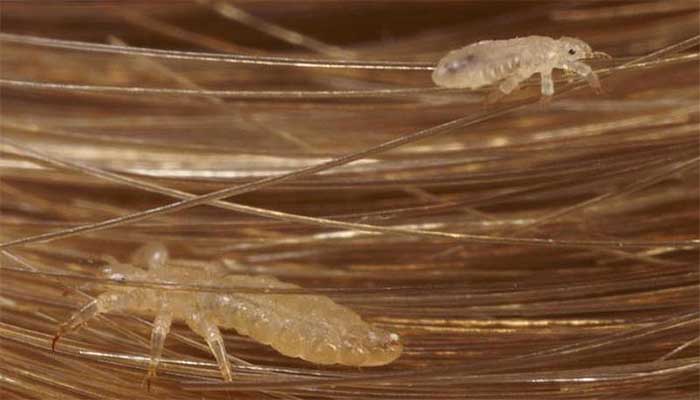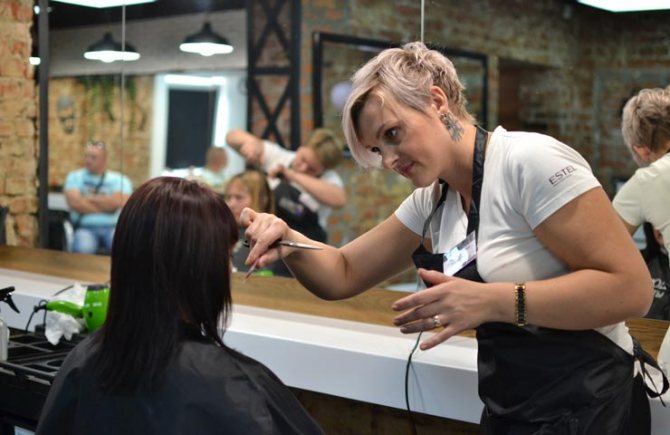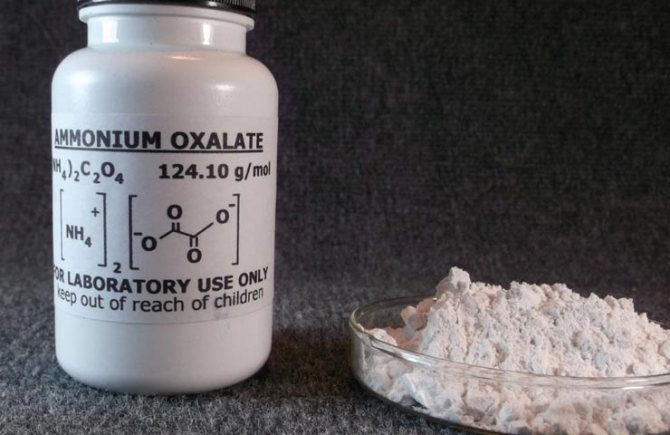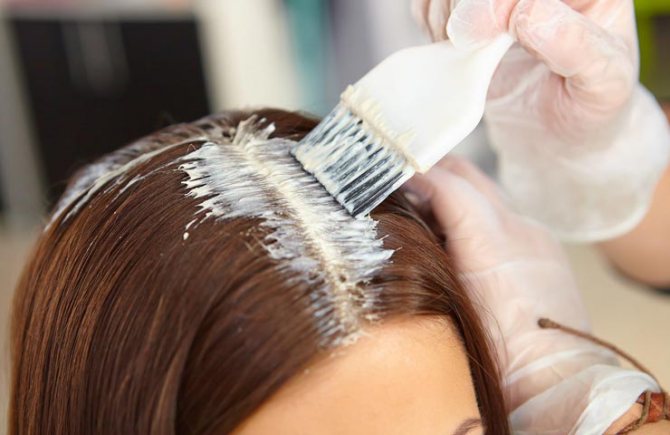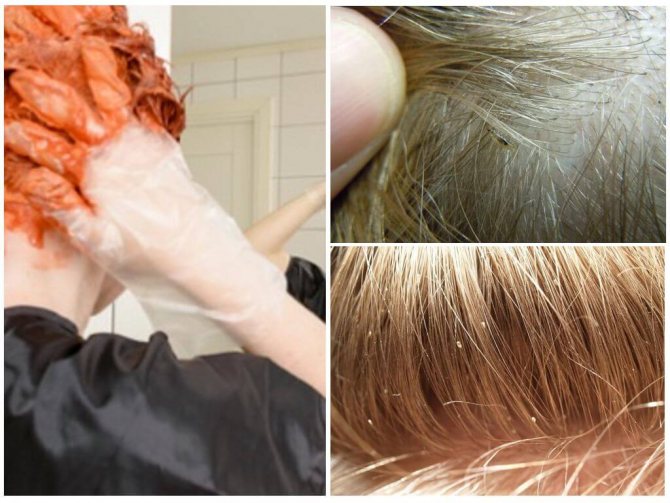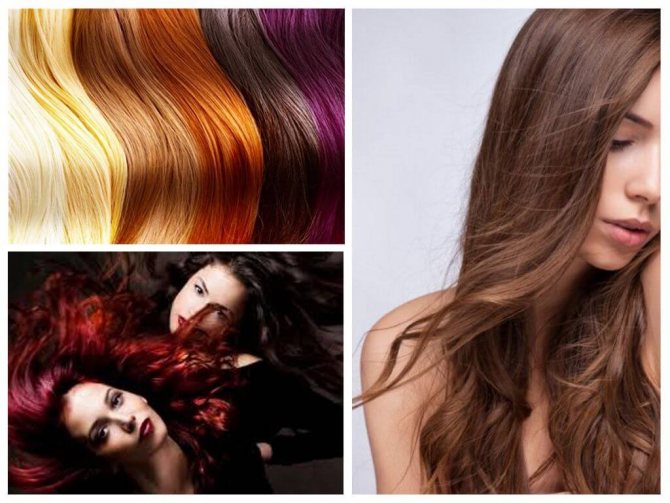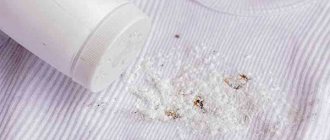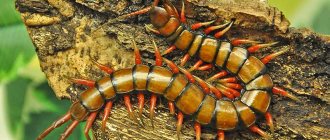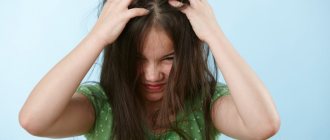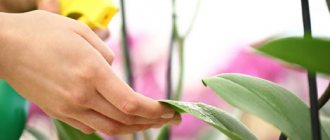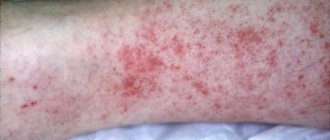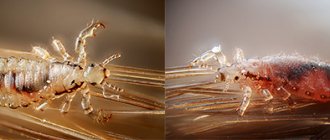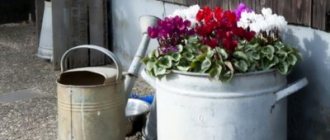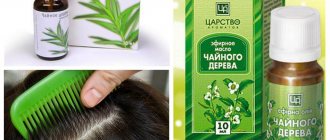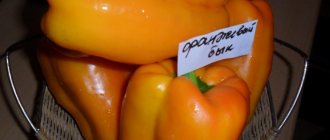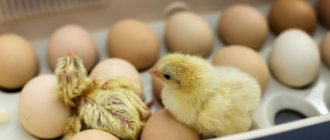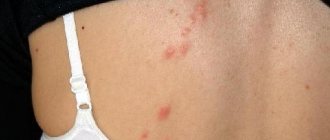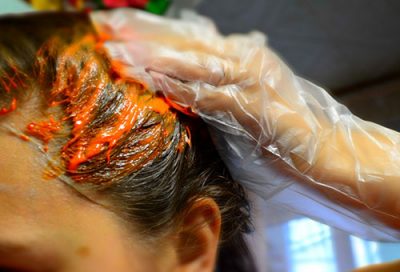
It is believed that if you dye your hair, the lice will die and disappear from the head. Is it so?
Today, there are a huge number of products designed to combat head lice. However, not everyone helps.
That is why many women who dye their hair every month, having heard that the dye can kill lice, decide to use this method.
How effective is it? Will hair dye kill lice?
Does hair dye kill lice and nits?
Does hair dye work against lice and nits? Is it possible to get rid of lice by dyeing your hair and remove nits?
Trichologists call this method of struggle not the best way to kill parasitessince there are more radical methods that have a directed mechanism of action.
Hair coloring really helps to solve several problems at once: get rid of parasites and transform.
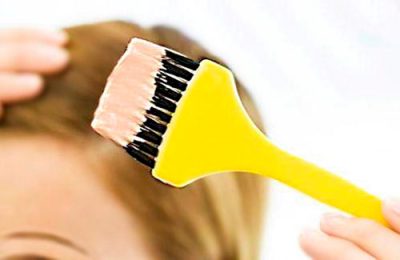

It should be noted right away that the composition of hair dye includes 2 components: coloring agent as well as oxidizing agent.
The first substance, i.e. coloring has absolutely no detrimental effect. The situation with the second component is somewhat different.
Hydrogen peroxide is often used as an oxidizing agent., i.e. a chemically active element that has a negative effect on lice.
Do lice die from hair dye, can nits and lice be killed with hair dye? When paint gets on the shell of the parasites, the insect cover is eaten away, which leads to their death. In addition, the oxidizing agent removes the nits from the hair, which makes combing out several times easier.
Can head lice be treated with hair coloring?
If you think that by dyeing your hair you will kill two birds with one stone - remove lice and refresh the brightness of your hair, then you are mistaken. Modern substances that are used to dye curls are considered ineffective against lice. They are made on the basis of plant elements without the addition of toxic ingredients, so as not to harm the skin and not burn hair. Newfangled dyes can only weaken the parasites, not kill them.
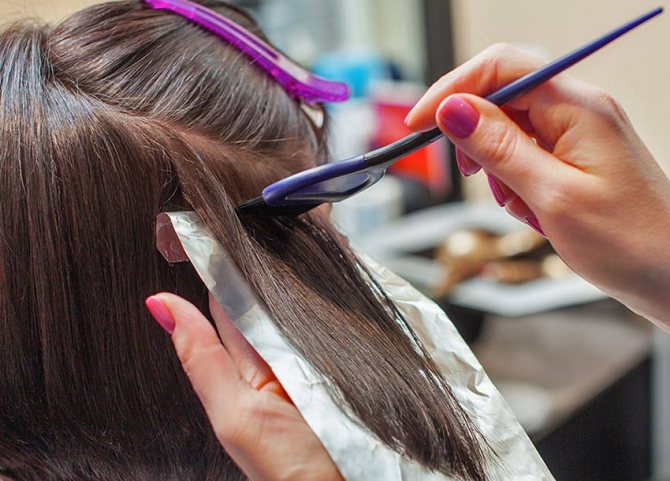

But if you really want to remove lice and nits with paint, you should use substances with perhydrol, ammonia and peroxide. This combination can negatively affect parasites, destroy their chitinous membrane, paralyze their respiration and kill adults. Nits do not die at the time of staining, their shell is much thicker, therefore, after the procedure, it is necessary to comb the hair well with a comb, and after a few days, repeat the combing procedure to remove the newly hatched parasites.
Sequencing:
- dilute the paint according to the instructions;
- cover your shoulders and body with a cape, and put on impervious gloves on your hands;
- use a brush to apply dye to strands of hair;
- put a plastic cap on your head and a towel on top to create a "greenhouse";
- keep the composition on your hair for the required amount of time;
- wash your hair with shampoo;
- carefully comb each strand with a lice comb and destroy them (do this in the bathroom, do not let the parasites scatter around the apartment);
- apply hair balm;
- after three days, repeat the procedure for combing out the parasites.
Even if you choose the right paint with ammonia, perhydrol and peroxide, the treatment does not guarantee the complete destruction of the lice. 80% of the nits will remain on the head, and after combing out, their number will decrease to 1-10%, but even a few hatched nits can recreate a whole army of parasites.
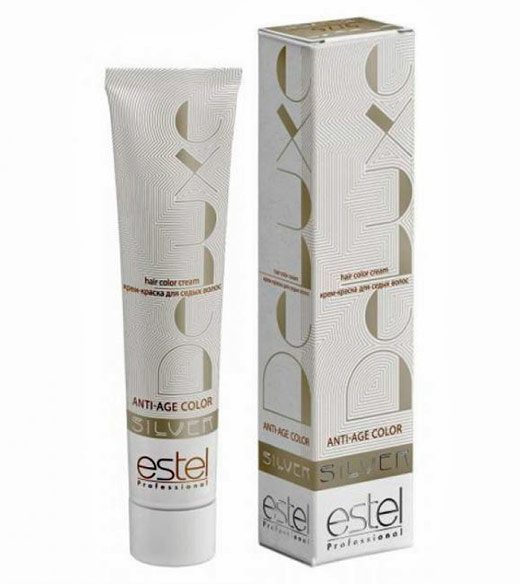

We strongly recommend using special pharmaceutical preparations to kill the lice without harming your hair. With one dyeing, you will not 100% kill all bloodsuckers, and frequent repeated dyeing will harm your hair, make it burnt and split.
The choice of the coloring composition
Today, there are a number of permanent paints that do not contain hydrogen peroxide and ammonia. Is it possible to remove lice and nits with hair dye with such a composition?
You shouldn't use them.since you will not get any effect.
When planning to get the expected effect of staining - to change the color, as well as get rid of lice, you should carefully pay attention to the composition of the paint.
In the instructions for the paint, in the "composition" section, need to find hydrogen peroxide or ammonia... It is this combination that makes a cure for head lice out of ordinary paint.
How common is head lice?
On the territory of Russia, more than three hundred thousand cases of head lice diseases are recorded every year. However, the number of drugs against lice and nits sold by pharmacies exceeds two million packs. It turns out that head lice is more widespread than statistics show.
This happens because people are ashamed of head lice and do not always seek help from a doctor, trying to get rid of the disease on their own. And the difference in these indicators proves that not all means help to remove lice and nits.
Children are more likely to become infected, because, unlike adults, they freely contact each other. But head lice can affect anyone.
The ancient peoples of lice were much more afraid than in the modern world with advanced medicine. In those days, head lice was treated exclusively with herbal decoctions, vegetable and berry juices. When it was not possible to get rid of lice and nits, more atomic agents such as kerosene entered the fight. However, this was an extreme measure, because the strong smell betrayed a lousy person and he was shaved bald. In the past, lice infestation was very feared, because they were carriers of dangerous and fatal diseases that grew into epidemics.
Correct coloring of curls
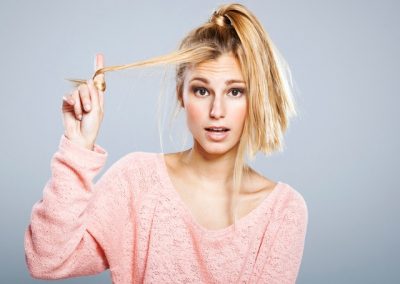

For the treatment of head lice, paint based on ammonia or hydrogen peroxide is used.
Step-by-step algorithm for dyeing hair from lice and nits:
- Mix all paint components;
- Apply this product to the hair using a special brush;
- Wear a special hat;
- In this form, you need to be 10-20 minutes;
- After dyeing, the hair should be rinsed using shampoo.
How to properly dye your hair to make lice disappear
In order for the procedure to help get rid of unwanted bloodsuckers, it is worth performing it correctly. Before you change the color of the strands, you must do the following:
- Buy ammonia paint. Most often, it is cheap and is found on the lower shelves of the store.
- Conduct an allergy test. Apply some paint to the skin, preferably on the crook of the elbow or wrist. If itching and redness do not appear in a day, then you can safely paint your curls.
The procedure should be carried out in a ventilated area. Always wear gloves on your hands. Apply a thick layer of greasy cream on the face, near the hairline and on the ears. The paint is diluted and applied according to the instructions.
It is better to entrust the coloring to another person. It will be easier for him to completely process the entire head of hair.
Staining with paint with hydrogen peroxide or ammonia cannot guarantee complete elimination of insects. Parasites can live on colored hair and multiply in them.Therefore, after the procedure, it is necessary to comb out the nits with a special comb. The comb will help get rid of the lice completely.
If it was not possible to remove the parasitic individuals, then you need to pick up another special tool: shampoo, ointment or spray.
Pros and cons
Now you know if hair dye can kill lice. The use of hair dye for lice has several obvious advantages:
- Efficiency - in 93% of cases it is possible to get rid of head lice completely;
- Safety - if used correctly, this medicine does not harm health;
- Profitabilityas well as ease of use.
Among the main ones, one can distinguish the appearance of allergic manifestations... However, there are others:
- Negative effect on the hair structure, as well as the skin. This procedure perfectly helps to get rid of this ailment, however, it will not work to do it in one application. To achieve a positive result, it is necessary to apply this method 2-3 more times over 4 weeks.
- There is a risk of developing the disease... On the one hand, the paint eliminates the appearance of lice, and on the other hand, the risk of skin irritation increases, which occurs due to the weakening of the protective functions.
- Do lice get on dyed hair and what is the specificity of treatment and selection of anti-lice remedies?
- how to remove nits and lice from long hair without resorting to a zero haircut?
- what do lice and nits look like on a person's head: white grains on the head - dandruff or head lice?
- a muddy pool of your eyes, or lice on your eyelashes;
- what to use to combat parasites on the head: what are lice and nits afraid of?
- treatment of head lice in pregnant women, as well as in a nursing mother: how to safely remove harmful parasites?
- head lice in adults: causes of infection and how to treat lice and nits?
- the best of the best: remedies for the prevention of head lice;
- the consequences of head lice or what is the danger of lice?
Basic rules for dealing with lice
There are a lot of remedies for lice: these are folk methods of treatment, and medicinal, and even hair dye. But some people, even using all the methods to get rid of lice, do not achieve the desired result. After 1-2 weeks after using the product, unpleasant itching, burning sensation, and an uncomfortable state appear again. In such situations, a person begins to declare the ineffectiveness of the means used. But why is this happening? Why does hair dye help one person get rid of lice while another does not? The fact is that many do not follow the basic rules for the treatment of head lice. What are they all about?
First of all, after treating the head, it is necessary to disinfect all your personal belongings and bedding. A powerful vacuum cleaner is used for general cleaning of the whole house: carpets, upholstered furniture, etc. are cleaned. Bedding and clothes should be washed in very hot water (if the type of fabric allows) and ironed with an iron. If it is not possible to clean blankets and pillows, then temporarily replace them or iron the surface with a hot iron. If it's freezing outside, you can put things on the balcony for 2 weeks.
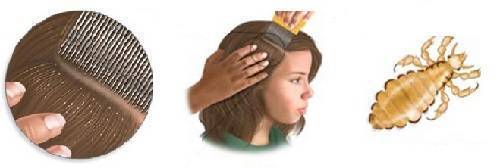

Processing rules
Particular attention should be paid to personal items: combs, combs, hairpins, elastic bands, scarves, hats, fur collars, etc. Plastic curlers, combs can be dipped in boiling water for 1-2 minutes
If a thing cannot be disinfected so as not to spoil it, then it is packed and not used for some time. Outside of humans, live lice live for 2-3 days.
Plastic curlers, combs can be dipped in boiling water for 1-2 minutes. If a thing cannot be disinfected so as not to spoil it, then it is packed and not used for some time. Outside of humans, live lice live for 2-3 days.
After each treatment, you need to carefully comb out the nits and killed lice with a special comb. It is advisable to comb out 1-2 times a day for a month after the last treatment, even if you are sure that all parasites are destroyed.
Even if lice were not found in the rest of the family, everyone who lives with an infected person should undergo preventive treatment. Contact with the source of lice should be avoided in every possible way. For example, if your child has caught lice from a roommate, ask the class teacher to transplant him. After all, you cannot be sure that this child has undergone full treatment and completely got rid of lice.
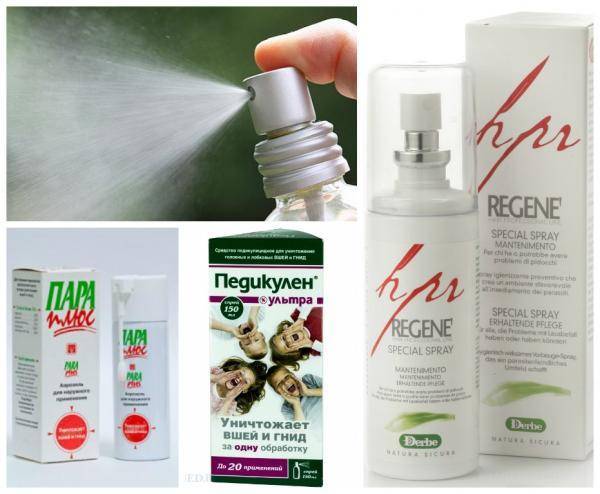

Popular remedies to combat head lice
Apply a few drops of juniper or lavender essential oil to your scalp and hair every day, as it repels insects very well and helps prevent re-infestation. Essential oils can be added to hair care products: shampoos, balms, masks. Among other things, oils can help improve hair health.
Continue to do regular cleaning in the room, boil the combs, etc. Only after 2-3 months, if head lice symptoms do not appear, you can be sure that you have got rid of the disease. Then the careful processing of personal belongings can be stopped. If the lice are reoccurring over and over again, look for the source of the infection. All family members should remove lice at the same time. There is information about lice that they especially like to settle on people with a certain body odor. Therefore, you can scare away insects by using, after washing, decoctions of various herbs, the smell of which they do not like: lavender, mint, eucalyptus and others.
Efficiency
Is it possible to get rid of lice with hair dye and nothing else? Not. For maximum effect it is necessary to use not only the folk method, but also pharmacy medicinessuch as shampoos, lotions, and scallops.
If you use only painting, then you will hardly be able to get rid of head lice completely.
Hair dye against lice and nits has a negative effect on parasites. it contains ammonia or hydrogen peroxide. but to achieve the effect, you should use not only painting, but also other methods of struggle with this ailment.
Pediculosis is an ancient disease. Humanity has come up with a lot of ways to get rid of lice. Along with modern pharmaceutical preparations, old proven folk recipes continue to be used. Among them is hair coloring. Does hair dye kill lice and nits? This question is often asked by girls and women.
Who is a louse and where does she live
The small parasite has a short life cycle that lasts two months. An adult female manages to lay more than one hundred eggs. She attaches her nits on a hair close to the skin.
The insect has three varieties:
- Head louse and nits - settles on the head.
- Pubic louse - lives among coarse hair: eyelashes, eyebrows, mustache, pubis.
- Clothes parasite - lives in clothes. It moves on its victim only to bite.
Does staining cure head lice
Modern paints cannot be called an effective remedy for lice. They are made on the basis of plant extracts and do not add toxic substances. Such paint can only change the color of the pest and weaken it a little.
Lice on colored hair live and multiply in the same way as on non-colored hair.
If you want to get rid of lice with paint, then you should choose a product with hydrogen peroxide and ammonia. Such a composition has a negative effect on the hair and its inhabitants. It destroys the chitinous membrane of the louse and kills it.
Nits on colored hair will not die. Therefore, after the procedure, it is worth taking a comb and combing the curls thoroughly.Combing will help remove eggs and dead pests.
Features of parasites
To know what methods to use to deal with the enemy, you need to study its weaknesses.
Lice are small insects with a body length of up to 4 mm. They live on the head, feed on blood. They move with the help of tenacious paws. They are able to cover a distance of 35 cm in a minute. They cannot jump or fly. Reacts sharply to unpleasant odors. The body is protected by a dense shell, on the surface of which spiracles are located.
They feed every 2 hours, the process of food absorption lasts up to 40 minutes. When released into the environment - the floor, bed, pillow, headdress, die within 3 days. The lifespan of an adult is 30-40 days. 1 head can live from 10 to 20 individuals.
Nits
Lice eggs. Oblong, oval, with a cap at the base. Egg length is about 1 mm. The dense shell protects the larva from adverse factors. No chemicals can penetrate through it - kerosene, gasoline, vinegar, insecticides.
Attached to the hair with a special adhesive that lice release when laying eggs. Under the influence of oxygen, the mucus hardens, firmly fixes the nits to the hair. They are unable to move, cannot be washed off with soap, and cannot be combed out with a regular comb. The photo clearly shows how lice and nits in the hair look.
Larvae develop in an egg for 7-10 days. They gnaw through the cover of the shell, get out. Empty nits remain on the hair. Small lice - nymphs lead the same lifestyle, but do not reproduce, since it takes another week to form the genitals. For 8 days, the nymphs undergo 3 molts, turn into a sexually mature individual, and then begin to reproduce.
Does hair dye work against lice and nits?
A wonderful cosmetic method - painting, allows you to simultaneously bring beauty, get rid of head lice. So many victims say, recommend an effective remedy to others. Is it possible to get rid of lice by dyeing your hair or is it just a myth.
How the procedure works:
- the head is treated with a special dye;
- put on a special plastic cap or bag;
- wait 45 minutes.
The same procedure is recommended to be done when removing lice using any folk, many pharmaceutical remedies.
The pungent smell of the coloring components clogs the spiracles, the plastic cap blocks the oxygen and prevents breathing. Within 45 minutes of exposure, crawling individuals die from hair dye. What can not be said about nits. They have reliable protection. The lice will die from the paint, the larvae in the eggs continue to develop. Eggs will disappear only with careful combing out of the nits.
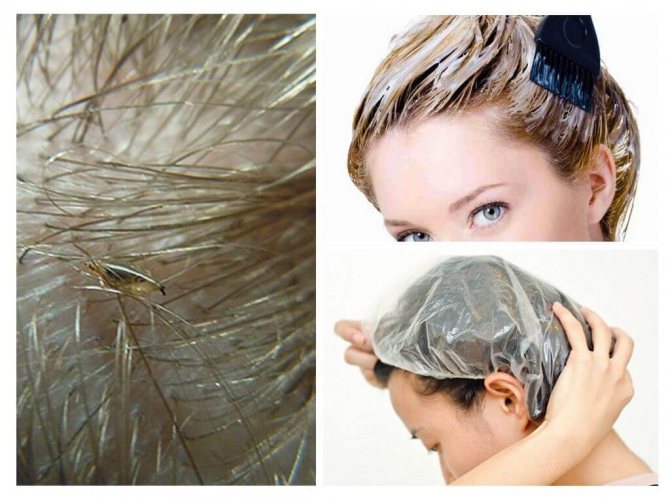

Staining procedure
What paint should be used
Modern cosmetology offers a huge selection of dyes. The composition of dyes for dark, light hair contains different components. Blondes, which contain strong oxidants, are suitable for the treatment of head lice.
It should be noted that a gentle product without hydrogen peroxide will be ineffective and will not be able to kill parasites. The whole secret of removing lice with hair dye in humans is hydrogen peroxide.
Effective paint against lice:
- all shades of blond, the stronger the oxidizing agent, the better;
- the composition must contain hydrogen peroxide;
- the expiration date has not expired.
In this case, the price does not play an important role, but you need to worry about the condition of the hair. Stock up on recovery masks, balms, lotions. Reviews about hair dye from lice are left by girls on the forums. Share their impressions of the effectiveness.
I remember that lice appeared in my younger sister's hair. Mom did not allow her to dye her hair, then the case turned up. The sister was 12 years old. I still had blond paint. Used for head lice her. We decided to check if hair dye helps against lice and nits.The result is a pretty girl with a stylish hairstyle. Dead individuals, nits were combed out with a comb for an hour. The head was not reworked with anything. I spent a week checking, choosing, all that was left. Insects begin to destroy within 30 minutes, so it is quite possible to solve the problem of lice with paint.
How hydrogen peroxide works
In medicine, the substance is widely used to disinfect the surface of the skin, to quickly recover from weeping eczema, open wounds. Accelerates the regeneration of damaged tissues without disrupting the processes in healthy cells. When exposed to oxygen, forms a white coating, prevents the penetration of infection.
Getting on the shell of the lice, clogs the spiracles, gets inside. Destroys internal organs, which leads to certain death. Lice begin to die from hair dye within 30 minutes.
There is information according to which hydrogen peroxide damages the shell and penetrates the larvae. This fact is not confirmed, but it is known that peroxide destroys the sticky substance with which the nits are attached to the hair. Parasites literally crumble from the head at the slightest touch with a comb.
The procedure for getting rid of head lice
You can remove lice with hair dye by following the instructions:
- distribute hair into strands, carefully process each of them;
- put on a plastic bag or a special hat;
- wrap a towel on top;
- leave to act for 30-45 minutes;
- wash off the paint with warm water;
- dilute 200 ml of bite in 500 ml of water, rinse hair.
A towel is needed to create heat on the head. In such conditions, peroxide acts faster, insects have no chance of survival. Vinegar makes combing easier and helps to separate nits from the hair. Dry your head slightly with a hairdryer, proceed with the combing procedure.
Advantages and disadvantages
You can dye your hair from lice instead of using special preparations if:
- roots have grown, you need to tint;
- I have long wanted to lighten my hair;
- there is no way to use another tool.
The main advantages are simplicity, availability, efficiency. The disadvantages include the fact that in order to consolidate the result, it is necessary to repeat the procedure after 10 days, for clarifiers such a period is contraindicated. Re-staining is allowed after at least 14 days. Otherwise, the hair deteriorates greatly - it loses its shine, becomes thinner, and splits.
If you dye your hair, nymphs of different ages, adults will die. Nits will live. A few missed eggs can give life to a new population within 14 days. The efficiency of one-time treatment is 80%, two-time - 99%, three-time - 100%. The break should be 7 days between procedures.
Pediculosis is considered an ancient disease, in the fight against which humanity has many ways. Along with pharmacy products, hair coloring is in demand. It seems to be just got rid of the lice and at the same time dyed the curls. In fact, not every paint can deal with parasites. A composition capable of doing this has contraindications for use by some women. Let's try to figure out if hair dye kills lice.
Prophylaxis
Why do I often get lice? And why doesn't dyeing your hair always help? The answer to these questions can sometimes be the same - because the rules of hygiene are not followed. Prevention is the only way to avoid re-infection, since all drugs, including paint, act only once and are not able to protect against parasites even for any length of time.
Preventive measures against head lice:
- regular head checks for parasites;
- hair treatment with insect repellents;
- smooth hairstyles;
- the use of protective caps when swimming in public waters;
- regular bath procedures and a change of dirty linen.
It is necessary to abandon the use of other people's combs, towels, hairpins. It is also advisable to avoid crowded places and crowded buses whenever possible.
Learn how to choose the right hair dye from this video:
Pediculosis is considered an ancient disease, in the fight against which humanity has many ways. Along with pharmacy products, hair coloring is in demand. It seems to be just got rid of the lice and at the same time dyed the curls. In fact, not every paint can deal with parasites. A composition capable of doing this has contraindications for use by some women. Let's try to figure out if hair dye kills lice.
Is it possible to remove lice by staining
People often use hair dye as a panacea for lice and nits, and believe that there is no need to purchase expensive pharmaceutical products. It is believed that you can get rid of parasites by dyeing curls. This method intrigues women. At the same time, make a change of image and recover from blood-sucking.
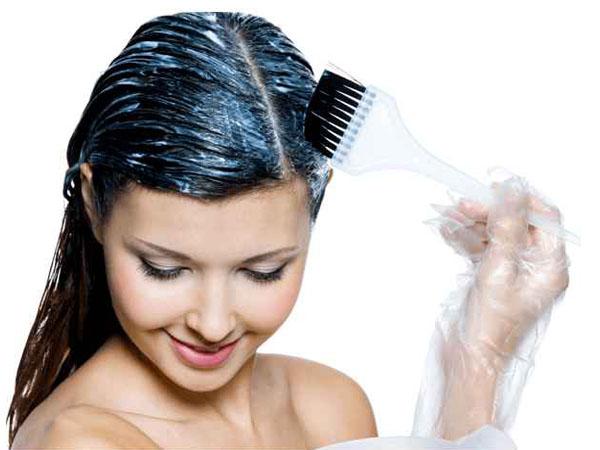

Hair dye solves these issues. It has a characteristic odor and consists of components harmful to blood-sucking components. Of course, not every representative of the beautiful half of humanity will decide on a radical change in the color of her hair. In addition, everyone knows that dye significantly spoils the hair structure. However, this method mercilessly and quickly kills lice, in addition, you can pick up the color as close as possible to the natural shade.
Of course, not all parasites will die after painting the curls, but most of them will still die. The remaining lice will become seriously weakened, the nits will come off the hair shaft and easily come out during combing. If you use a special comb purchased at the pharmacy, then weakened insects and eggs can be easily eliminated.
Important! When combing is not done, then new lice develop from the nits, the weakened ones will soon recover and begin to multiply further. It is possible to completely get rid of head lice only with an integrated approach.
Lice reasons
To figure out whether a louse can appear on dyed strands, you need to understand why she loves to live on the scalp so much. Parasites only need your blood - this is the only component of their "diet". The hairs are used by sexually mature females to fix nits - individuals secrete a special sticky secret to attach their offspring to the cuticles. In such conditions, the new generation can develop normally.
In fact, it makes no difference to lice or nits whether you have the natural color of the curls or acquired it with the help of dyes, the main thing is that blood circulation in the capillaries does not stop, and there are rods on which the larvae will grow.
The only thing that saves colored hair is a change in its structure in the first two to three days after using the composition. Until the curls are restored, adults have nowhere to attach the nits, they simply fall out. However, after a short time, such an opportunity appears, and head lice develops at a rapid pace.
The louse lives for about 6 weeks, during which time it manages to produce several new colonies of parasites. Pediculosis can occur suddenly, from the moment of infection to the appearance of nits, very little time passes, the disease develops rapidly.
Effects of hair dye on lice
Using hair dye is an alternative method of dealing with head lice. Any coloring agent consists of two components:
The first substance affects exclusively the change in hair color. The dye has no effect on insects. An oxidizing agent is a chemical that reacts actively. Getting on the body of the parasite, it destroys its chitinous cover.
The components acting on lice include:
- hydrogen peroxide, which is highly aggressive. It is a strong oxidizing agent that has a detrimental effect on the surface tissues of the insect. Thus, destroying their structure. This leads to the death of the pest. If some lice manage to avoid this contact, then they die from toxin poisoning. Their spiracles are burned out, the mouth organs are damaged, with which the parasite pierces the skin. Lice die due to the inability to breathe and feed further;
- paint, which consists of the active ingredient ammonia, also has a detrimental effect on lice. Its chemical properties are similar to hydrogen peroxide. Ammonia also affects the respiratory system, destroys chitin and mouth organs.
For your information, paints made on the basis of henna, basma do not have any effect on lice.
Features of the effect of the coloring composition
Any hair dye is a mixture, a kind of solution, consisting of two main components:
- dye substance (responsible for color);
- oxidizing substances.
The dye substance does not in any way affect the viability of lice and nits and does not have a detrimental effect on them, which cannot be said about the oxidizing substance.
Oxidizing agent is a substance that, under certain conditions, becomes chemically active, enters into chemical reactions accompanied by various effects.
When dyeing hair, the dye enters into the fight against parasites. The oxidizing substance begins to gradually corrode the chitinous cover of the lice, and as a result, their death occurs.
Manufacturers of hair dyes often use hydrogen peroxide as an oxidizing agent. Its power is miraculous, it kills not only lice, but also their eggs.
Hydrogen peroxide acts on parasites like vinegar or kerosene: upon contact with liquid, the parasites die, it kills them, and those who are stronger and more resilient try to crawl into places devoid of poisonous vapors. As practice shows, after the first contact with hydrogen peroxide, 80% of all parasites die.
Failure to comply with safety regulations or improper preparation of the consistency of the solution during staining can cause serious injuries to the skin on the head - burns and redness.
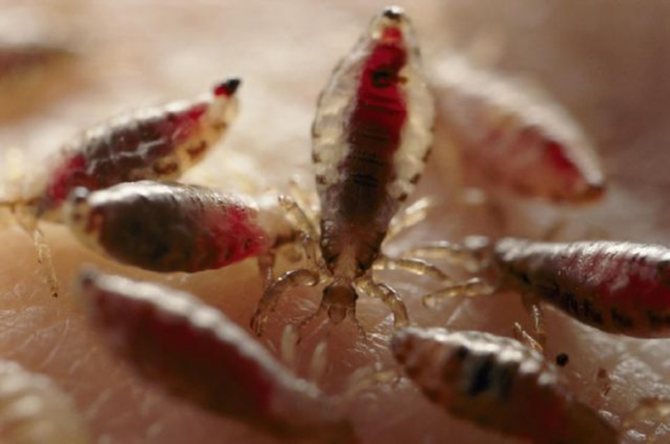

Hydrogen peroxide is an active chemical. Its oxidizing properties contribute to the destruction of complex molecules of organic origin and the decay of biological structures.
What happens to lice when they come into contact with hydrogen peroxide? Biologists describe this process as follows: when a chemically active liquid enters the outer covers of parasitic insects, they are damaged, and liquid vapors, entering the internal respiratory tract, burn out the tissues of the spiracles. The insect cannot cope with the dose of the received poison and dies.
With nits, the process becomes more complicated. It is in vain that some believe that nits are dying out like lice. Hydrogen peroxide cannot kill them completely. The protective shell of the eggs is intact. But there is a destruction of the structure of the secret responsible for the "attachment" of the egg to the hair. The strength is lost, therefore, after the interaction of nits with hydrogen peroxide, it is easy to get rid of them with the help of an ordinary comb by combing out. A few strokes with a comb - and the nits crumble like ripe apples from a tree.
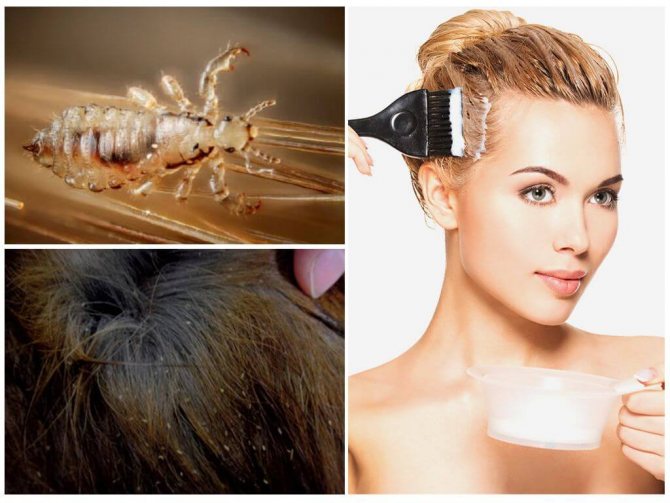

Hair dye for head lice
Hair dye for lice and nits is one of the alternative unconventional methods of dealing with head lice. The basis of any coloring mixture is made up of two ingredients: an oxidizing agent and a dye. Moreover, the latter only contributes to a change in hair color, but it has no effect on lice. What can not be said about an oxidizing agent, which is a chemically active substance that can enter into various reactions.It is enough for him to get on the body of a bloodsucker for the process of destruction of his chitinous membrane to begin.
- Such an aggressive component is hydrogen peroxide. Due to its high oxidizing properties, it has a detrimental effect on the structure of the surface tissues of pests, destroying them, from which the pests are forced to die. Insects that have managed to avoid such contact are poisoned by toxic fumes. They not only burn out the tissue of the spiracles, but also damage the skin puncture tool. As a result, bloodsuckers very quickly die from hair dye, as they are no longer able to eat and breathe.
- The oxidant reacts to nits in a completely different way. It will not be possible to remove the capsules with eggs with paint, due to the fact that the coloring composition is not able to destroy the shell, which is distinguished by its high strength. However, it dissolves well the sticky secret that keeps nits on human hair. Deprived of this sticky composition, the nit will be forced to fall when combing out or it will be easily washed off with running water while washing the hair.
- Lice die no worse from paint containing ammonia. The chemical activity of this component has a similar negative effect on lice. The same cannot be said about paints of a more gentle composition, created on the basis of synthetic oxidants. They cannot influence parasites. Therefore, if you want to remove lice with hair dye with such a composition, you will not be able to succeed.
Peroxide is found in any hair dye. It is an oxidizing agent in a separate bag, without which the paint itself will not hold. In its pure form, peroxide is extremely dangerous and can cause burns.
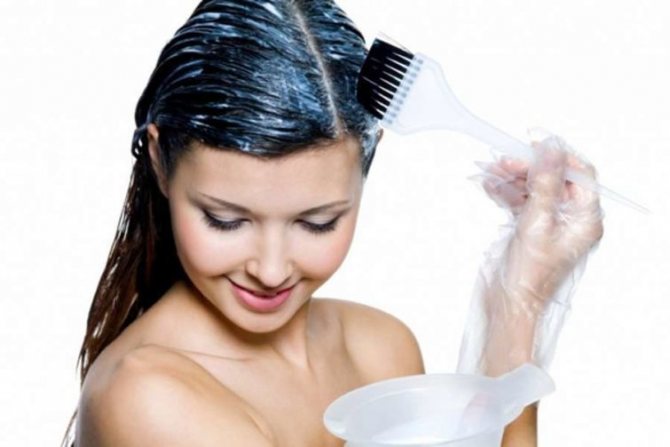

Without peroxide, the hair dyeing process is impossible, since then the paint will be washed off after the first contact with water. But you need to handle this substance with extreme caution, because in addition to lice and nits, a person can also get harm. However, if you decide to dye your hair in order to remove parasites, then an oxidizer is perfect for this.
Hair dyes contain hydrogen peroxide, which kills insects
If peroxide can cause burns in humans, then it works the same way against lice. Although these parasites are dressed in chitin, it is quite thin, and as soon as the peroxide gets on the scalp, all their "armor" will instantly begin to swell and melt.
Lice die from multiple burns to the calf, which is left without protection. In addition, peroxide eats away well the special mucus that lice use to attach their eggs to the scalp.
However, staining alone will not be enough. After treating the head with peroxide, there will still be live, but severely injured lice, as well as nits. But they will no longer be viable, therefore, if you are going to dye your hair with peroxide paint, then you must definitely use a comb, with which you could then comb out the remaining tenacious parasites and their eggs.
Peroxide literally eats away at the body of the parasite
If the peroxide just seriously injures the lice, then the ammonia kills them. Since this substance is much stronger, it practically burns the chitin of the lice, and with it the bodies of the parasites themselves. Nits also die quickly enough, as ammonia easily eats away at their eggs and the secretion that keeps them on the scalp.
However, as in the case of peroxide, not all lice die from one staining. Some still manage to survive, however, they cannot reproduce and carry out any other activity.
Therefore, in any case, you will have to use a thick comb to comb out dead lice and nits. Most of the parasites will most likely simply fall off the hair themselves or be washed off with water along with the paint, but it will not be superfluous to check with a comb.
Removing lice and nits with paint is extremely effective and fast, while this process, in addition to practical benefits, also has many pleasant aspects for a woman.
However, it never hurts to consult a doctor and find out if all the lice have been destroyed and how you can remove the remaining insects by other methods if they remain. The main thing is to never give up and fight to the end!
And how to remove lice and nits from a child in 1 day, you can find out by reading this article.
In addition to medicines, folk remedies are also used to get rid of lice and nits at home. Some of them are harmless, others can be quite dangerous. Consider the most common folk remedies for the treatment of head lice:
- Kerosene. Dilute kerosene with vegetable oil in a ratio of 1:10. Use oil of sunflower, corn, pumpkin seeds, grape seeds. The resulting composition is carefully distributed on the scalp, wrapped in waxed paper (parchment) or polyethylene, insulated with a scarf and kept overnight. The next morning, the head is washed with ordinary, baby, sulfur or tar soap and the dead lice and nits are combed out with a fine comb dipped in vinegar for the best removal of eggs from the rods. According to numerous reviews, kerosene is a very effective but dangerous remedy. In case of inept use, you can get severe burns, both to the head and to the face.
- Lemon, cranberry or pomegranate juice - contains a large amount of acids that are difficult to tolerate by these parasites, the juice is applied to the entire length of the hair, kept for a while, then washed off and combed out the nits.
- A good remedy for lice and nits is cranberries. Fresh cranberry juice (three handfuls) is rubbed into the hair roots, the remnants of the squeeze are applied to the entire length of the hair. The hair is hidden with a plastic cap (and a towel on top) for three hours, until completely dry. Further, according to the standard scheme - washing and combing out.
- Rinse and rub with vinegar. In the first case, we need a 70% vinegar solution, which is mixed with water in a ratio of 1 to 10. The patient's head is thoroughly washed with the resulting solution once a day for 3 days (sometimes longer). For wiping, it is better to use table vinegar, which is also diluted with water, but already in a ratio of 1 to 1. The resulting mixture is applied to the head with a cotton swab. After 10-15 minutes, the head is thoroughly washed out with cold running water.
- Take half a bucket of coniferous branches, cover with water and boil for two to three hours. After washing your hair with laundry soap, rinse it with warm broth and leave it overnight, wrapped in a towel. The broth quickly gets rid of lice, since the parasites cannot stand the smell of needles and die.
Folk remedies for getting rid of lice are of course very good. The effectiveness of these funds is approximately 90%
Method advantages
Hair dye in the fight against head lice in comparison with other methods has the following advantages:
- high degree of effectiveness, 80% of lice die after the first procedure;
- complete safety for the human body, provided that all staining rules and contraindications are observed;
- cheapness of the method. Usually, paints containing ammonia and hydrogen peroxide are inexpensive;
- the instant of the technique. More than half of the lice die immediately after the end of the procedure;
- ease of use. To dye your hair does not require any special knowledge and skills.
Attention! Hair dye in a short period of time is able to cope with head lice, and without harming human health.
Drawing conclusions
On the Internet, you can find both bad and good reviews about the use of paints for head lice. Girls who choose modern, gentle paints without ammonia and hydrogen peroxide usually get a negative experience. Such means are powerless in relation to larvae and adult parasites.
Also, negative consequences await women who dye several times in a row with a small interval - their curls become dry and lifeless.
Remember that even medications do not give a 100% guarantee, they must be reused after 14-15 days to consolidate the effect. This problem is much easier to prevent than to fix.
Be responsible for your personal hygiene, do not share hats and combs with anyone to protect yourself from lice infestation.
Disadvantages of the method
In addition to the advantages, the use of coloring agents, like the other method, has its disadvantages. The following unpleasant moments that arise during hair coloring stand out:
- the possibility of an allergic reaction to the coloring agent;
- a complete color change that some women are not ready for. Especially those who have not previously used hair dyeing;
- damage to the hair structure;
- the possibility of troubles with the scalp, for example, itching, dryness;
- an increase in the hypersensitivity of the skin, which leads to an increase in the number of nits.
Before applying the coloring agent, you must make sure that the person does not have an allergic reaction to the components. To do this, you need to check to determine the sensitivity of the skin on the back of the hand. If after 5 minutes, there is a burning sensation, redness, a rash appears, then another method should be chosen to fight parasites, for example, head lice shampoos, which can be purchased at any pharmacy.
What are lice and how are they dangerous?
A disease called head lice is a lice infestation. Lice is a parasitic insect that lives on the hairy part of the human body and feeds on its blood. Despite the short life cycle (about 2 months), lice reproduce quite productively, one louse is capable of laying more than 100 eggs. Obviously, head lice should be treated, since the disease does not disappear by itself.
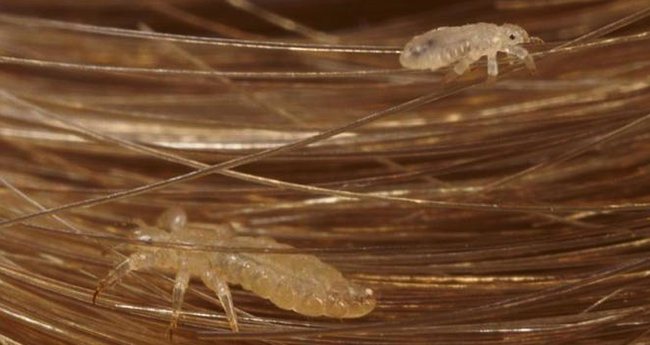

There are three types of lice:
- Those living on the scalp are head.
- Lice that have settled on the hair of the groin area, as well as eyelashes and eyebrows are pubic.
- Lice that live in tissue are body lice.
There is a stereotype that only children can get lice, this is not entirely true. Undoubtedly, children are most at risk of this disease when they come into contact with other babies who carry lice, but an adult can also become the target of the parasite.
In order not to become infected with head lice, it is important to observe a number of hygienic rules:
- Use only personal combs and hair brushes.
- Do not wear other people's hats.
- Do not neglect shampooing.
- Do not use other people's towels.
- In crowded places, it is better to collect your hair in a ponytail or bun.
- A cap must be worn in the public pool.
- Do not touch your head with the fabric surface of transport seats, cushions, etc.
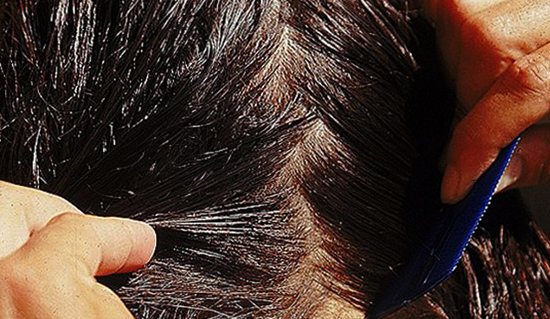

A person who has ever encountered the problem of head lice knows the symptoms that accompany this disease: itching at the site of the bite, redness and peeling. It may seem that this is not the worst thing that can be expected from "harmless bugs", but the occurrence of lice can provoke more unpleasant consequences, which include:
- Suppuration of combed wounds.
- Hair can become dull and lose shine.
- Painful lice bites disrupt sleep.
- Sleep disturbance.
- In young children, having lice causes fear and anxiety.
- An allergic reaction may occur due to the waste products of the lice.
- Skin discoloration due to tissue engorgement, peeling.
- The appearance of ugly scars after the healing of combed wounds.
Lice, like many other parasitic insects, carry typhus and relapsing fever, Volyn fever, and less often tularemia. The symptoms of these diseases are similar, so only a doctor can make the correct diagnosis.
It is important to take into account the fact that head lice can become a chronic disease, in this case, the quality of human life suffers greatly, nervousness increases, a feeling of anxiety appears, the bites of blood-sucking insects are especially strongly felt after washing the head.
Pediculosis infestation in children should not be ignored. Without harm to the child, lice can be removed only by a mechanical method using a comb with frequent teeth, you can use pharmacy products only after carefully studying the instructions or visiting a doctor. Currently, there are many drugs to combat parasites, so it is better to forget about the old methods using kerosene and dust.
How to stain
In order for hair coloring to help in the fight against head lice, first of all, you should choose the necessary composition of the product. You need to carefully read the instructions for the content of hydrogen peroxide or ammonia in the paint. The most effective shades for achieving the desired goal will be blond shades.
Next, you should check for hypersensitivity to components. If there is no redness and itching, then you can start staining. The procedure should proceed as follows:
- it is forbidden to use an expired drug;
- it is necessary to prepare the dye mixture with strict adherence to the dosages specified in the instructions;
- before starting the procedure, you should wash your hair, dry it and remove dead insects with a comb;
- further, it is necessary to distribute the hair into strands and treat each of them with the prepared paint;
- put on a hat. If not, then you can use a plastic bag;
- wrap yourself with a towel on top. This is necessary to create a greenhouse effect that kills the lice;
- leave the coloring agent for half an hour;
- then wash off the dye with detergent and warm water;
- rinse hair with lemon solution. To do this, dilute the juice of 1 lemon in 1.5 liters of warm water;
- dry your head with a hairdryer;
- comb out nits and dead lice.
Important! Curls should be painted no more than twice a month. If after the first dyeing it was not possible to completely get rid of head lice, then you need to use other methods, since the dye can cause significant damage to the hair.
Procedure steps
To dye your curls and get rid of lice, you need to follow the steps of the procedure correctly. First of all, do an allergy test to make sure there are no negative reactions to the components of the composition. To do this, apply a small amount to the skin behind the ear and wait 12 hours. If redness, irritation and other unpleasant sensations do not arise, you can start carrying the product.
We do everything according to the instructions:
- we protect our shoulders with a cape, and our hands with gloves;
- we dilute the paint according to the annotation;
- apply to the strands with a brush;
- we put a plastic cap and a warming cap or towel on our head to create a greenhouse effect;
- we maintain the composition for the allotted time;
- wash off with water and shampoo;
- apply balm.
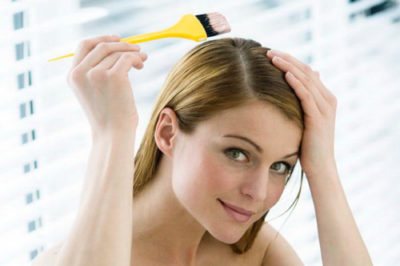

After rinsing off the paint, the process is not completed. We need to comb out dead lice and loose larvae from the strands. This is a rather laborious work that requires outside help.
Try not to walk with your hair loose so that nits do not fall on the floor and furniture, they can easily "settle" in your head of hair again as soon as they turn into adults.
Spread a few sheets of white paper on the floor, they will clearly show the results of your work. Take a metal comb with fine teeth and start combing carefully from the roots, strand by strand. Ask someone to check if there are any parasites left after treatment in the curls.
Contraindications
It is forbidden to use hair coloring when fighting head lice in the following cases:
- children under 16 years old.Since the coloring agent can cause burns to sensitive skin;
- during pregnancy. Since the oxidant penetrates the placental barrier and harms the fetus;
- if there are scratches and wounds on the head, which are often caused by insect bites;
- when breastfeeding, since the toxic components of the paint corrode the damaged epithelium and penetrate into breast milk.
Using hair dye as a means of combating head lice, you should selectively approach the composition of the drug and follow the instructions.

